



Pattadakal: Also called Pattadakallu or historically Raktapura, is a remarkable cluster of 7th and 8th-century Hindu and Jain temples located in northern Karnataka, India. Situated on the west bank of the Malaprabha River in Bagalkot district, this site lies about 23 km from Badami and 9.7 km from Aihole, both important centers of Chalukya architecture. Recognized as a UNESCO World Heritage Site, Pattadakal is famous for its harmonious blend of northern and southern Indian architectural styles and its rich sculptural heritage.
Pattadakal Temples: Historical Significance
The name Pattadakal means “Stone of Coronation,” highlighting its role in Chalukya coronation ceremonies. It is historically associated with King Vinayaditya’s coronation in the 7th century CE. Other historical names include Kisuvolal (“valley of red soil”) and Raktapura (“city of red”).
During the 5th–6th centuries, the early Chalukya rulers followed Vaishnavism, later converting to Shaivism, which explains the predominance of Shiva temples in the region. Pattadakal, along with nearby Aihole and Badami, became a hub for architectural innovation. Here, northern and southern Indian temple styles were fused to create some of the finest examples of early medieval temple art in India.
The region later saw the rule of the Rashtrakutas, Late Chalukyas, Vijayanagara Empire, and Mughal and Maratha powers, with each period contributing to the preservation and occasional modification of the temples.
Location and Accessibility
Pattadakal is set amidst scenic sandstone hills along the Malaprabha River valley. The site is approximately:
Architectural Style
The Pattadakal temples reflect a unique fusion of two major Indian architectural styles:
Major Temples at Pattadakal
Here are the major temples located at Pattadakal:
 1. Virupaksha Temple: The largest and most sophisticated temple, built around 740 CE under Queen Lokamahadevi. It features a square sanctum with a Shiva Linga, covered circumambulatory path, and intricately carved friezes depicting Shaivism, Vaishnavism, and Shaktism. The temple inspired the Kailasha temple at Ellora and displays the craftsmanship of Early Chalukya architecture.
1. Virupaksha Temple: The largest and most sophisticated temple, built around 740 CE under Queen Lokamahadevi. It features a square sanctum with a Shiva Linga, covered circumambulatory path, and intricately carved friezes depicting Shaivism, Vaishnavism, and Shaktism. The temple inspired the Kailasha temple at Ellora and displays the craftsmanship of Early Chalukya architecture.
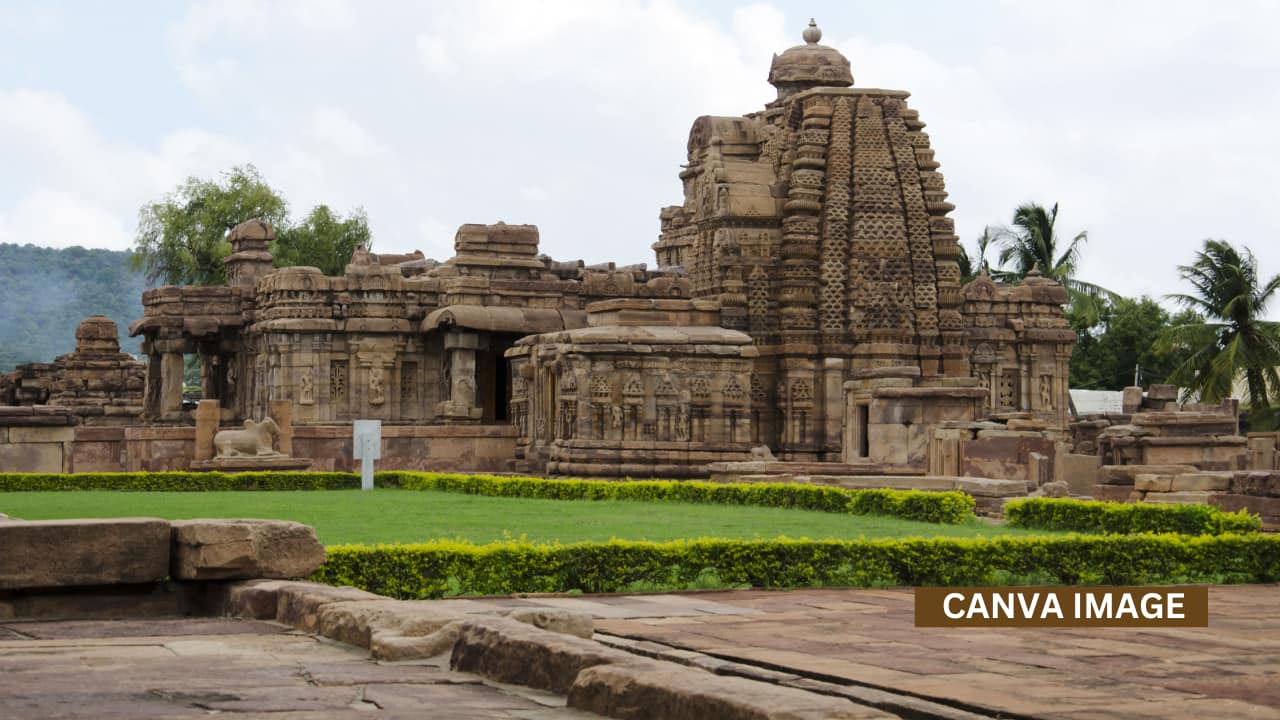 2. Mallikarjuna Temple: Built around the same time as Virupaksha Temple, it showcases Dravidian vimana-style architecture. Its pillars and walls display scenes from the Ramayana, Mahabharata, Bhagavata Purana, and Panchatantra, along with depictions of musical instruments and daily life.
2. Mallikarjuna Temple: Built around the same time as Virupaksha Temple, it showcases Dravidian vimana-style architecture. Its pillars and walls display scenes from the Ramayana, Mahabharata, Bhagavata Purana, and Panchatantra, along with depictions of musical instruments and daily life.
 3. Papanatha Temple: Notable for blending Dravida and Nagara styles, the Papanatha Temple incorporates two interconnected mantapas and elaborate carvings of Shaiva and Vaishnava deities.
3. Papanatha Temple: Notable for blending Dravida and Nagara styles, the Papanatha Temple incorporates two interconnected mantapas and elaborate carvings of Shaiva and Vaishnava deities.
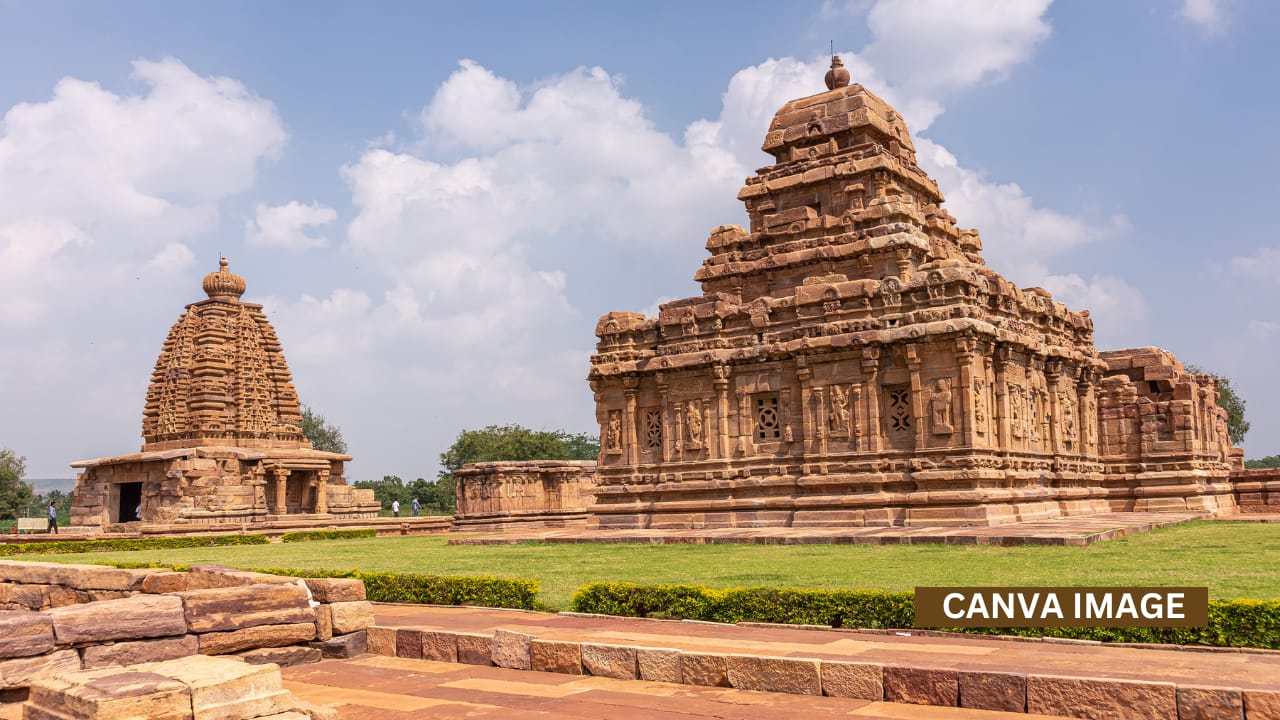 4. Sangameshwara Temple: A Dravida-style Shiva temple built between 720–733 CE. The temple has a square sanctum, covered pradakshina patha, sixteen massive pillars, and friezes depicting Rama, Vishnu, and Shiva.
4. Sangameshwara Temple: A Dravida-style Shiva temple built between 720–733 CE. The temple has a square sanctum, covered pradakshina patha, sixteen massive pillars, and friezes depicting Rama, Vishnu, and Shiva.
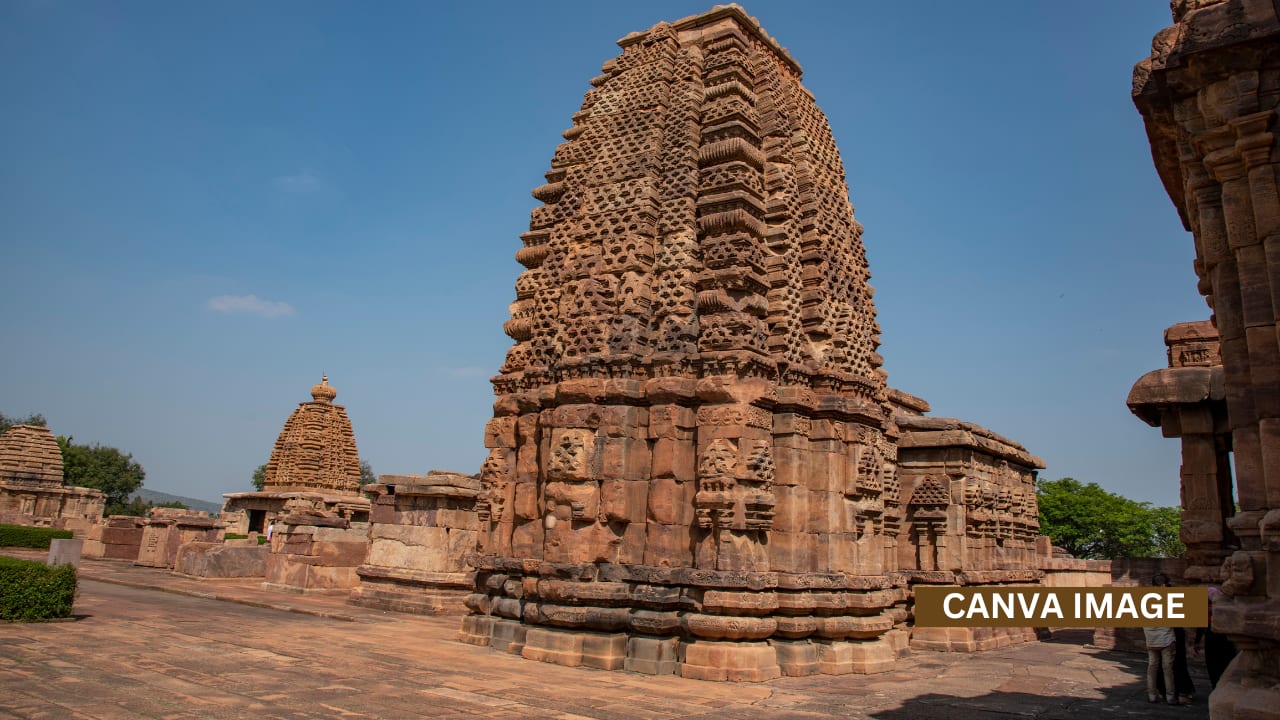 5. Kashi Vishwanatha Temple: A smaller temple from the late 7th to mid-8th century, displaying intricate carvings of Ardhanarishvara, Lakulisha, and Vishnu. Its walls are adorned with friezes depicting the Ramayana and Shiva Purana.
5. Kashi Vishwanatha Temple: A smaller temple from the late 7th to mid-8th century, displaying intricate carvings of Ardhanarishvara, Lakulisha, and Vishnu. Its walls are adorned with friezes depicting the Ramayana and Shiva Purana.
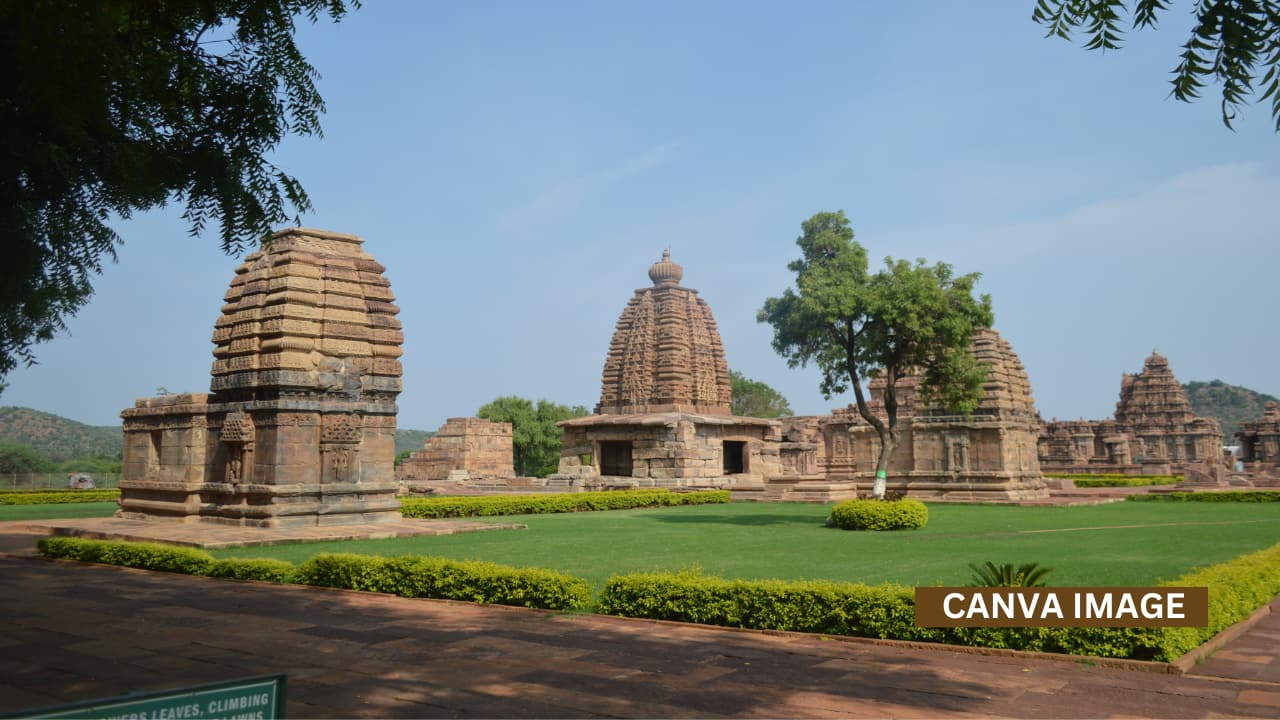 6. Trailokeshwara Temple: Sponsored by Queen Trailokyamahadevi, this mid-8th century temple features a fully developed Dravidian-style vimana and showcases friezes of Krishna’s rasalila, Panchatantra fables, and Hindu deities.
6. Trailokeshwara Temple: Sponsored by Queen Trailokyamahadevi, this mid-8th century temple features a fully developed Dravidian-style vimana and showcases friezes of Krishna’s rasalila, Panchatantra fables, and Hindu deities.
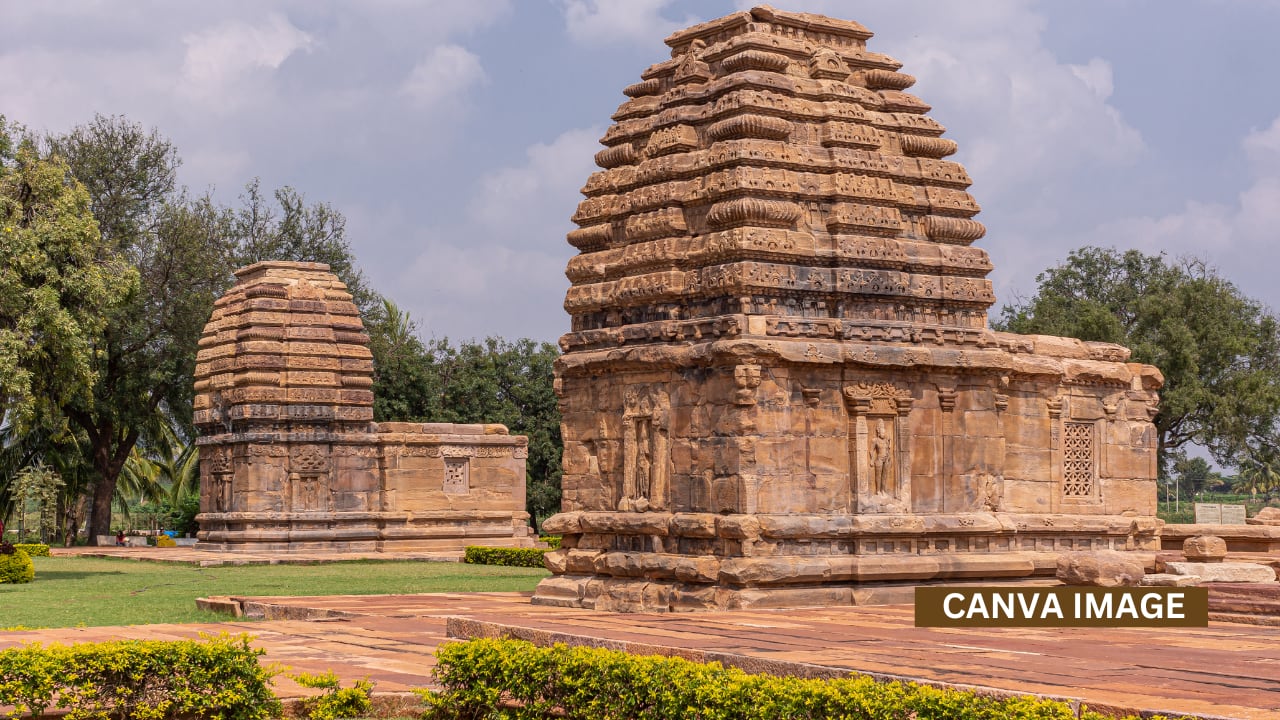 7. Jambulingeshwara and Kadasiddheshwara Temples: Small but significant temples featuring Nataraja, Ardhanarishvara, Harihara, and Lakulisha sculptures. These temples exhibit the experimentation of early Chalukya architects.
7. Jambulingeshwara and Kadasiddheshwara Temples: Small but significant temples featuring Nataraja, Ardhanarishvara, Harihara, and Lakulisha sculptures. These temples exhibit the experimentation of early Chalukya architects.
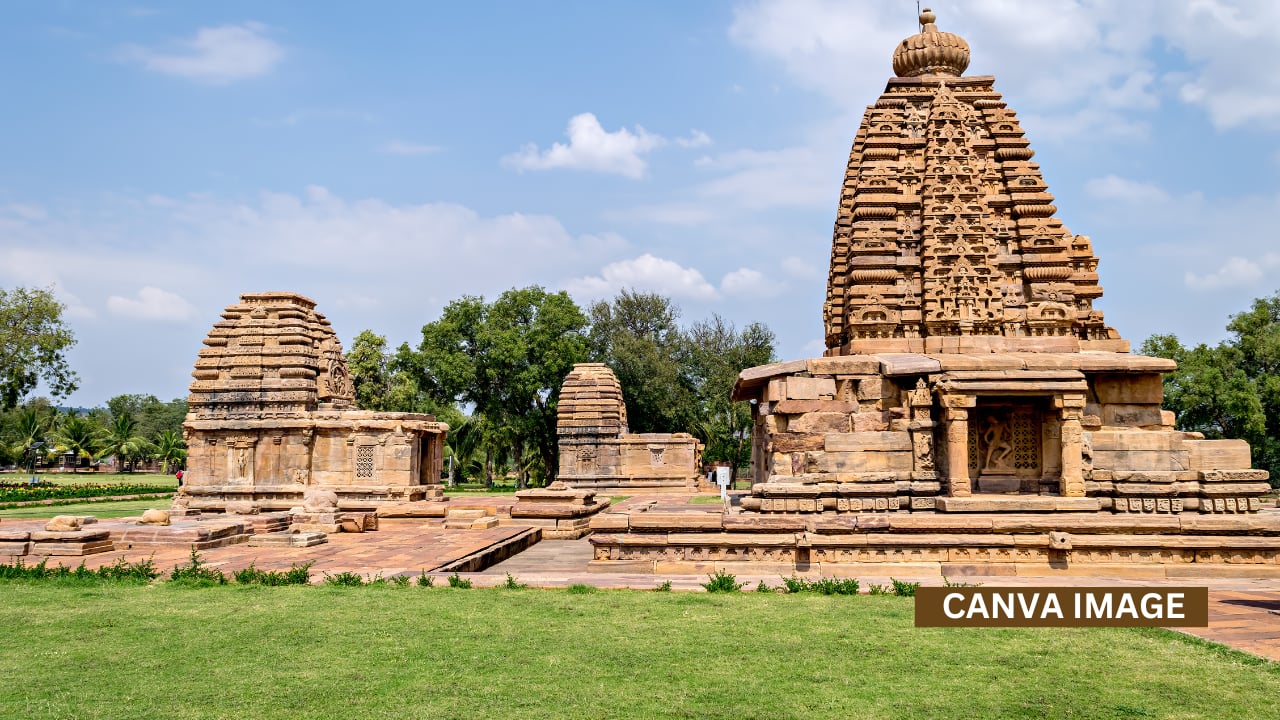 8. Galaganatha and Chandrashekhara Temples: The Galaganatha Temple has a covered circumambulatory path and friezes of Shiva slaying demons. Chandrashekhara Temple, although smaller, maintains the classical square sanctum layout with a seated Nandi.
8. Galaganatha and Chandrashekhara Temples: The Galaganatha Temple has a covered circumambulatory path and friezes of Shiva slaying demons. Chandrashekhara Temple, although smaller, maintains the classical square sanctum layout with a seated Nandi.
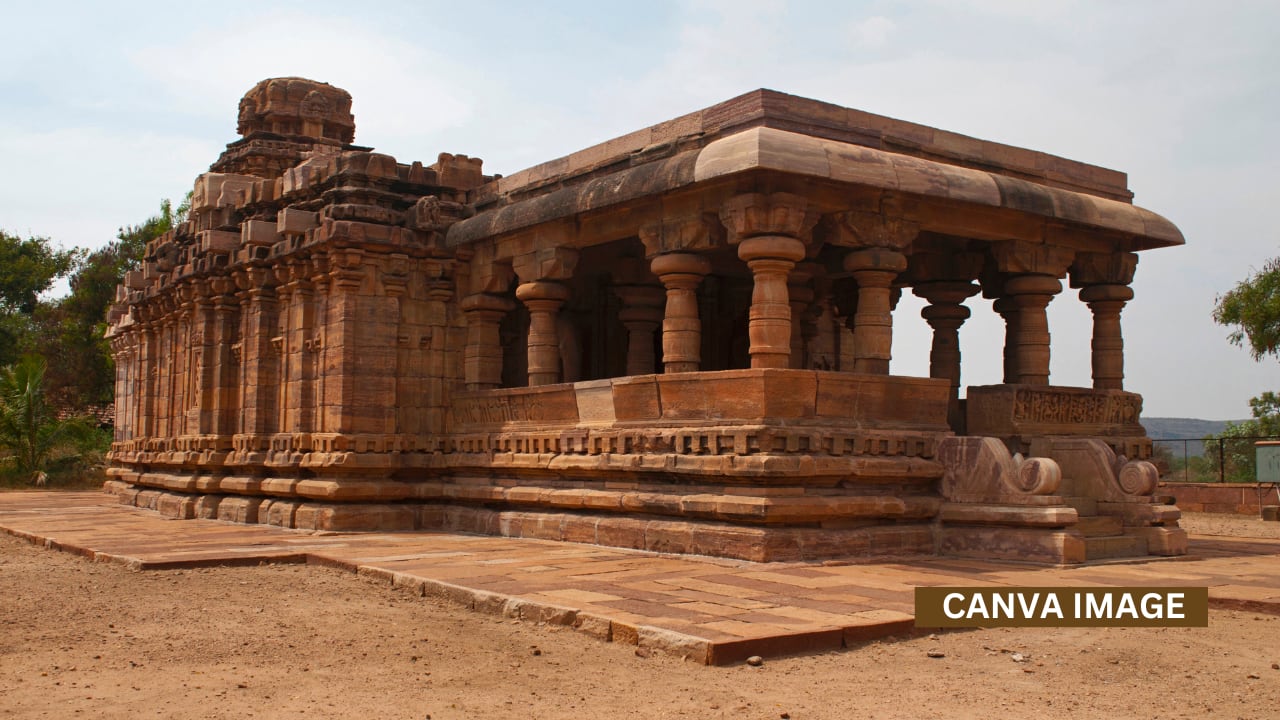 9. Jain Narayana Temple: Built in the 9th century, it represents Jain architecture with a square sanctum, circumambulatory path, and lathe-turned sandstone pillars. It lacks intricate Hindu deity panels but features a standing Jina sculpture.
9. Jain Narayana Temple: Built in the 9th century, it represents Jain architecture with a square sanctum, circumambulatory path, and lathe-turned sandstone pillars. It lacks intricate Hindu deity panels but features a standing Jina sculpture.
Prehistoric Monuments
Archaeological studies reveal that Pattadakal was inhabited well before the Chalukyas. Dolmens dating back to the Iron Age (1200–500 BCE) have been found near Bachinnagudda, showing a long tradition of megalithic structures in the Malaprabha Valley.
Cultural and Religious Significance
Pattadakal exemplifies 8th-century Hindu kingship, religious art, and temple culture. The temples’ carvings portray the tension between Dharma (duty) and Moksha (liberation), as seen in depictions of Rama’s royal duties and yogic ascetics. The fusion of Northern and Southern styles reflects the Chalukya spirit of integration and architectural innovation, achieving a harmonious blend described by UNESCO as “the apogee of eclectic art.”
Music, Art and Daily Life
Friezes at Pattadakal not only depict deities and legends but also scenes of everyday life, courtship, and musical performances. Instruments carved in stone, such as long-necked lutes, indicate a rich tradition of musical experimentation dating back to the 7th and 10th centuries.
Pattadakal is easily reachable by road, train, or air via nearby airports. Visitors can explore the main cluster of eight Hindu temples, the Jain temple, and smaller shrines, all set against the backdrop of the Malaprabha River and sandstone hills. The site remains a testament to the artistry, devotion, and vision of the Chalukya dynasty, offering a unique window into early medieval Indian civilization.
Discover the latest Business News, Sensex, and Nifty updates. Obtain Personal Finance insights, tax queries, and expert opinions on Moneycontrol or download the Moneycontrol App to stay updated!
Find the best of Al News in one place, specially curated for you every weekend.
Stay on top of the latest tech trends and biggest startup news.